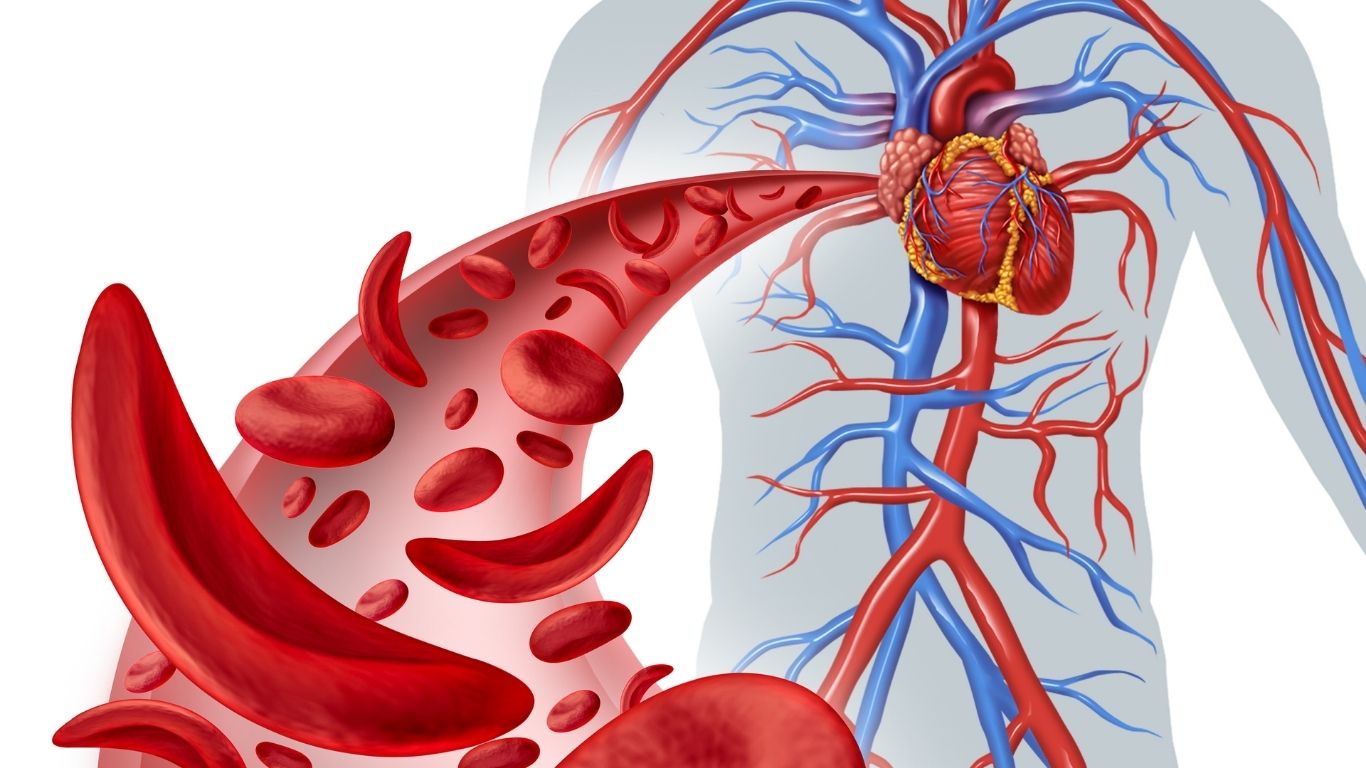
Every time a child cries out in pain from a condition they don’t understand, a parent’s heart breaks a little more.
In many families across Kenya, Sickle Cell Anaemia remains a silent and often misunderstood condition until a crisis hits.
Sickle Cell Anaemia is a type of Sickle Cell disease. Other types include HbSC, HbS beta-plus thalassemia, and HbS beta-zero thalassemia. They arise from various Hemoglobin combinations and abnormal Hemoglobin genes.
But here’s the thing: the signs often show up early, and knowing what to look for can save a life. Early diagnosis means better management, better care, and better outcomes.
In this post, we share 10 signs of Sickle Cell Anaemia you should never ignore especially if you’re a parent, caregiver, teacher, or health worker.
What Is Sickle Cell Anaemia?
Sickle Cell Anaemia is an inherited condition passed from parents to children through genes. It is a genetic blood disorder that affects the shape and function of red blood cells. Instead of being round and flexible, these cells become hard, sticky, and crescent-shaped blocking blood flow and causing unimaginable pain.
It’s most common in regions where malaria is prevalent like many parts of Kenya and sub-Saharan Africa.
In Kenya, an estimated 14,000 children are born each year with Sickle Cell Disease but due to poor screening, many go undiagnosed.
10 Signs of Sickle Cell Anaemia You Should Never Ignore
Fatigue and Unusual Tiredness
Children with sickle cell anaemia often feel constantly drained. This is because their red blood cells don’t carry enough oxygen as they are abnormally shaped. Therefore, they break down more easily than normal red blood cells leading to a shortage of red blood cells, a condition called Anemia. The Anemia reduces the amount of oxygen in the blood causing the fatigue.
If your child is too tired to play, walk, or engage like other kids take note
Frequent Infections
The spleen’s primary functions include storing blood cells, participating in immune responses, and filtering blood. It removes old and damaged red blood cells from the blood cells. Additionally, it is involved in producing Lymphocytes and antibodies which help the body fight off infections.
Due to their sickle shape the red blood cells get trapped in the spleen obstructing blood flow. This causes the spleen to enlarge and can lead to tissue death also known as splenic infarction. It eventually leads to the loss of the splenic function also known as Autosplenectomy.
Swelling in Hands and Feet (Dactylitis)
Dactylitis is also known as hand-foot syndrome. It is a common symptom of sickle cell disease among infants and young children.
It involves painful swelling of hands and feet caused by sickled red blood cells blocking blood vessels in those areas.
Pale Skin or Yellow Eyes (Jaundice)
The destruction of red blood cells causes a yellowish tint in the eyes or skin.
Many parents confuse this with malaria but it could be something more. In places where Malaria is prevalent, jaundice is a symptom of severe Malaria.
Chronic Pain Episodes
Sickle cell crises can cause sharp, deep pain in the chest, joints, or limbs.
Sometimes, this pain comes without warning and lasts hours or days. Chronic pain can significantly impact a person’s quality of life, leading to fatigue, insomnia, and reduced physical and social activity.
Delayed Growth or Puberty
Because of reduced oxygen and nutrients, children may grow slower or hit puberty later than peers. Sickle cell crises can also affect bone health, potentially causing issues like avascular necrosis (bone death) in the joints, which can further impact growth and development.
Difficulty Breathing or Chest Pain
If your child experiences chest pain or breathlessness, it could signal acute chest syndrome a dangerous complication. It occurs when the sickled red blood cells block vessels in the lungs causing inflammation, infedction and reduced oxygen flow. The symptoms include chest pain, coughing, trouble breathing and fever.
Vision Problems
Sickle-shaped cells can block small vessels in the eyes, leading to vision loss or blurriness. These problems can range from mild, like seeing floaters or experiencing blurry vision, to severe, like sudden vision loss or even blindness.
Frequent Headaches
These may be caused by low oxygen in the brain or mini-strokes, which are more common in children with sickle cell.
Dark-Coloured Urine
Dark coloured urine may be a symptom of sickle cell disease, specifically due to the presence of blood in the urine (hematuria) or the kidneys’ inability to concentrate urine
When to See a Doctor
If your child exhibits more than two of the signs above especially alongside chronic pain or fatigue visit a paediatrician immediately.
In Kenya, screening and treatment are available at major hospitals like:
- Kenyatta National Hospital
- Moi Teaching and Referral Hospital
- Coast General Teaching and Referral Hospital
- Aga Khan and other private centres
Living with Sickle Cell in Kenya
Sickle Cell is not a death sentence but early intervention makes all the difference.
Children living with this condition deserve inclusion, compassion, and equal opportunity.
They need schools that understand their pain days. Teachers who won’t label them lazy. Classmates who will play without judgment.
It starts with awareness.
Let’s Talk About It
At Geuza Wazo, we believe that every child matters, including those with invisible conditions like Sickle Cell Anaemia.
✅ Share this post to raise awareness
✅ Join our mailing list to get helpful resources every month
✅ Watch our YouTube video to support inclusion: https://www.youtube.com/@Geuzawazo

